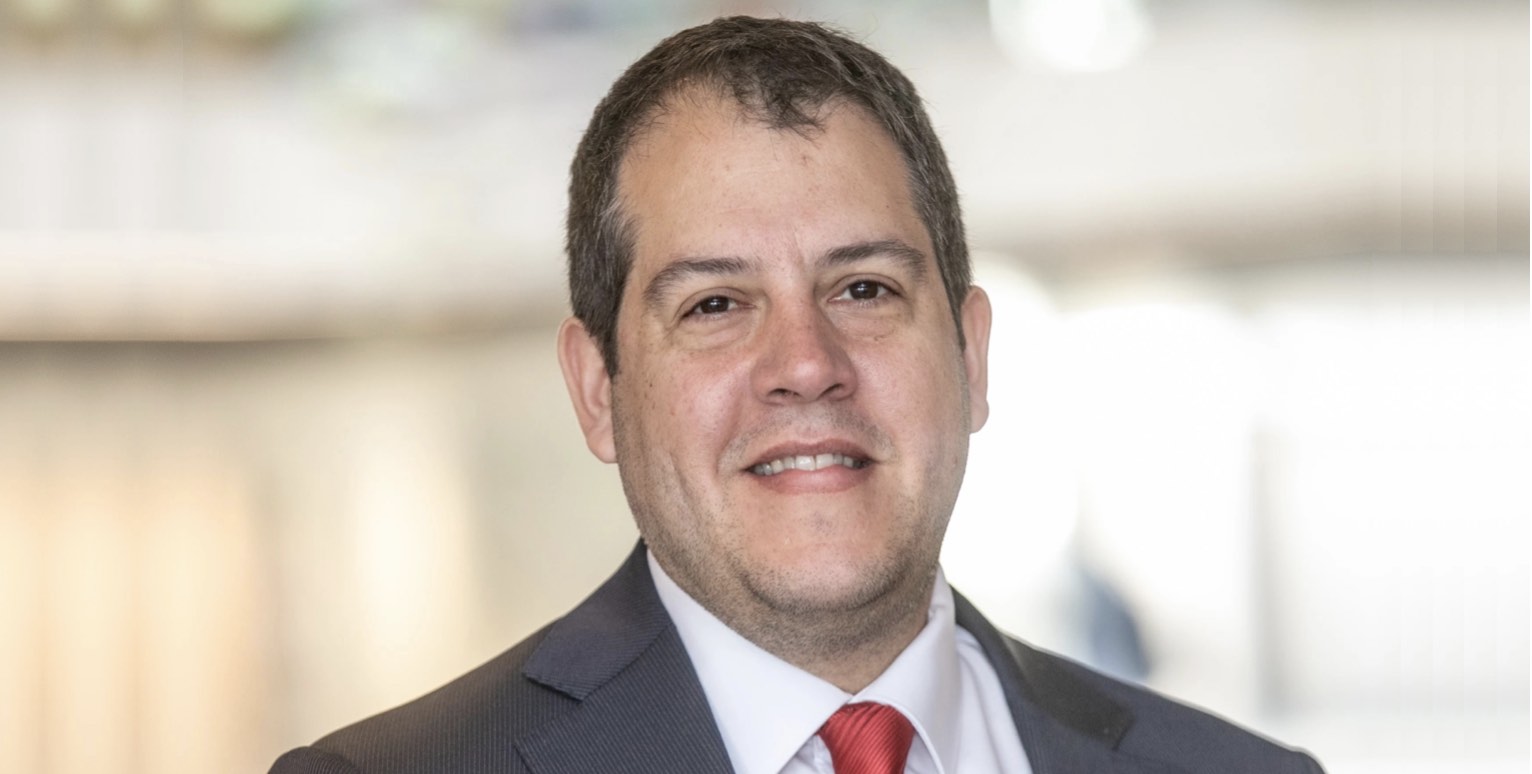In anticipation of our upcoming Annual Nordic Insurance Industry Report, we have recorded a series of roundtable discussions with CIOs of Nordic life and non-life insurers.
This series aims to discuss some of the key findings highlighted in the report and we will share these discussion leading up to the publication.
This second episode explores how ESG policies have evolved and how investors are rising to the challenges of new data requirements, EU sustainable finance regulations and ambitious targets for green and impact investing
You can read the summary in this article or watch the video below.
Panelists:
– Lars-Göran Orrevall, Chief Investment Officer at Skandia Life in Stockholm
– Niels Elmo Jensen, Chief Investment Officer at Laegernes Pension in Copenhagen
– Emanuele Fanelli, Senior Responsible Investment Officer at Aegon Asset Management in The Hague
– Moderated by Jonas Wäingelin, Editor in Chief, NordicInvestor
Evolution of ESG policies
ESG policies have evolved over the past 30 years from exclusion/negative screening, to integration, engagement and impact investing, and the three speakers’ firms have followed a similar pattern in expanding their ESG policies.
“We started excluding tobacco in the 1990s, and continued with controversial weapons. The engagement component was always there. Sustainable asset management is very strongly driven by regulations, customer demands and society, especially in the Nordics. The UN SDGs and impact are increasingly important, in areas such as sustainability linked bonds. Climate change also requires other issues to be solved”, says Orrevall.
“As the Danish doctors’ pension fund, we started excluding tobacco in the 2000 and then extended this to cover the UN Global Compact, which was followed by the US death penalty. This was just based on exclusion but now climate needs to be far more integrated. Now ESG covers all asset classes apart from derivatives,” says Jensen.
“The Nordics and the Dutch have always been leaders in ESG. We started excluding tobacco which is natural for a life insurer focused on health and wellbeing. We then ruled out controversial weapons and then broadened this to fossil fuels such as thermal coal and tar sands. We also exclude sovereign bonds of countries that do not meet UN criteria. Our first ethical fund is now over 30 years old,” says Fanelli.
Aegon’s ESG framework is quite typical of a large asset owner or asset manager. It now has three pillars. “Firstly, integration of ESG factors into the financial methodology. Secondly, exclusions and solutions based on best in class sustainability and impact. Thirdly, active ownership and stewardship, including proxy voting and engagements,” says Fanelli. However, the devil is in the detail of how the policies are practically implemented.
Realistic Targets
There are plenty of ambitious targets.
“Our goal is to reduce fossil fuels and increase green investments targets by 2025 while other investors are targeting 2040 or 2050. We are evaluating winners and losers in green energy and other solutions,” says Orrevall. However, a policy of zero fossil fuels overnight may not be practical in the short term. “The global economy still uses fossil fuels and needs to transition to cleaner energy. We have reduced fossil fuel exposure a lot over the past five years but are not taking it away altogether,” says Orrevall. It is not entirely clear to what extent the SFDR allows for transition, though the EU taxonomy can accommodate some forms of transition.
Data Challenges
These sorts of targets require data reporting from companies and asset managers. Carbon data is one example where there are gaps. “We have targets for carbon reduction but do not have adequate measurement tools. We need more ESG data to inform a forward-looking investment process, which is a work in progress now,” says Jensen.
“In any case, targeting carbon below a benchmark is not enough”, points out Fanelli. Indeed, regulatory requirements for reporting are going beyond carbon emissions to include other measures of climate risk. “Regulators in Denmark require regular reporting of physical climate and climate transition risks, and this information is hard to get. In some cases, we can ask companies to send information to specialists data providers, and we are getting more transparency,” says Jensen.
More broadly the data is currently highly heterogeneous: “There are issues with the quality, availability, timeliness and standardization of data, and it varies between regions and asset classes. For instance, large cap company data is better and European data is better. These discrepancies need to be managed,” says Fanelli.
The data needs to be cleaned and manipulated to become useful: “Taking data at face value is not smart because data alone cannot capture the sustainability risks and opportunities. There are challenges in how to measure and report for large portfolios, and a qualitative element in assessing it is paramount to have full understanding. We also need to make qualitative judgements about future transitions, such as how a government strategy might be transformed into an impact strategy, through providing healthcare and fire fighting in a remote part of an island. It is very complicated and time consuming to do ESG properly,” says Fanelli.
Asset managers and asset owners should not assume that the data will be served up and spoon fed to them on a plate. They may have to roll up their sleeves, and do their own deep dive digging to ferret out the figures they need: “Data gaps need to be filled. I work closely with a team managing securitized assets which did not have any data. Therefore, we worked with each individual originator and deal to get the data from managers,” says Fanelli.
Engagement with companies and asset managers
This is one example of how engagement with companies and asset managers can improve data and reporting quality, as well as corporate behaviour in some cases. “The prime time to influence companies is when they are raising capital. We find more opportunities for new issues in credit than in equity. We also have some influence over infrastructure issues and sustainability linked bonds,” says Orrevall. “We also have more influence over primary market issues, and see more issues in bond and credit markets,” says Jensen. As well as corporate issuers, asset managers are also listening to investors: “no managers argued against changing our equity benchmark to a climate benchmark, and we expect that most manager will accept ESG constraints,” says Jensen.
Alternatives and data gaps
Some alternative managers have been slower to rise to the challenge of investor reporting demands. “We ask external managers about ESG and UNPRI. We have been quite successful in asking emerging market asset managers and some US asset managers who were not interested at the beginning. However, we are still struggling in private equity and venture capital where many of the best funds are US based and not as advanced as European funds. All of this is changing faster than a couple of years ago,” says Orrevall. “We also struggle to get the information from private equity managers,” Jensen agrees.
Once again a DIY (Do It Yourself) mentality is needed to dig out the data: “we have a large private equity program, which is very labour intensive and research intensive to understand the most relevant ESG questions. Traditional managers do not have the skillset. There is no one size fits all because you need to understand the methodology, geography and local regulations, to measure the net positive impact from an environmental and social perspective. This requires different indicators and data, and goes beyond just complying with regulations,” says Fanelli.
Challenges of Modelling Unprecedented Change
But even if data was perfect and consistent it would not be a total solution. The normal approach to modelling is “garbage in, garbage out”. But climate and transition modelling is fraught with uncertainties, because there is no historical precedent for it. There are multiple approaches to modelling climate trajectories in different companies, industries and countries. This means that even if data was much better the outputs of some models could still turn out to be inaccurate “garbage”. “You cannot build an econometric model for a one-time change because there are many question marks around the available data. You must exercise qualitative judgement. I sit on the board of the Swedish national advisory board for impact investing. Academic models are almost impossible to use for practical investment and measurement purposes. It will take time to develop better models,” says Orrevall.
ESG and Fiduciary Duty
Another possible constraint to consider is different opinions about whether various ESG investment policies could at some stage conflict with the fiduciary duty to deliver investment returns.
For Skandia it is self evident that climate conscious investing must be consistent with investment objectives: “you could argue that excluding tobacco sacrificed returns. But now of you cannot understand how climate will change the economy, energy systems and business models, you will not have a good return,” says Orrevall.
Some investors however are not so sure if all forms of ESG investing are indeed consistent with investment objectives. For instance, SFDR article 9 or “dark green” strategies could go far beyond existing policies in restricting the investment universe, as could the EU taxonomy in its current form. “Clients would like us to invest according to SFDR article 9 but our regulator requires us to seek the highest possible returns within our risk framework. These could conflict,” says Jensen.
Valuation Bubbles?
Higher valuations for ESG assets are one obvious source of potential conflict, which is easiest to measure in fixed income markets. If green bonds offer a “greemium” (green premium) for issuers in terms of paying a lower interest rate on their debt, it also clearly means that investors are receiving a lower yield! If the green bond has the same credit rating and other risk factors as another bond from the same company, then should ESG policies such as green allocation targets require investors sacrifice returns for the sake of their principles and policies?
The greemium might only be a few basis points of yield but in other areas such as renewable infrastructure green assets could be offering potential returns several whole percentage points lower than other investments which might have similar risk. Several asset owners interviewed by Nordic Investor have raised concerns about bubbles in areas such as infrastructure and green investing, as well as technology equities on the liquid side.
“Tesla is a perfect example that cannot be valued on traditional models,” says Orrevall. “Tesla is clearly a bubble and there have also been some very expensive companies in the Danish market,” says Jensen. The levels of growth baked into some asset prices might now be unrealistically high. “The real bubble is inflated expectations on what can be delivered,” says Fanelli.
Ultimately active managers need to be selective. “Not all green investments will be good investments or generate high returns, and some will lose money, but some will be very interesting,” says Orrevall
Evolving EU Rules
EU rules such as the taxonomy and SFDR will push some asset managers towards green investments. But the rules are at an early stage, and need to be complemented with other types of analysis and reporting. “When we looked at the EU taxonomy we found less than 1% of 1,700 companies were aligned with it. And the taxonomy is so complicated that people will not be able to understand it. Therefore, our own reporting will blend the taxonomy with other measures. We expect to have data issues for at least two years,” says Orrevall.
The long term hope is that EU rules generate a virtuous circle of improving practices, data and disclosure throughout the ecosystem of sustainable investing, and also address “greenwashing” fears. “We expect that SFDR will be positive for asset owners, asset managers and companies. It will take time for them to improve reporting, and of course some managers may try to inflate their ESG performance. But transparency should create a positive feedback loop, and a mechanism to name and shame those who misuse the system,” says Fanelli.



